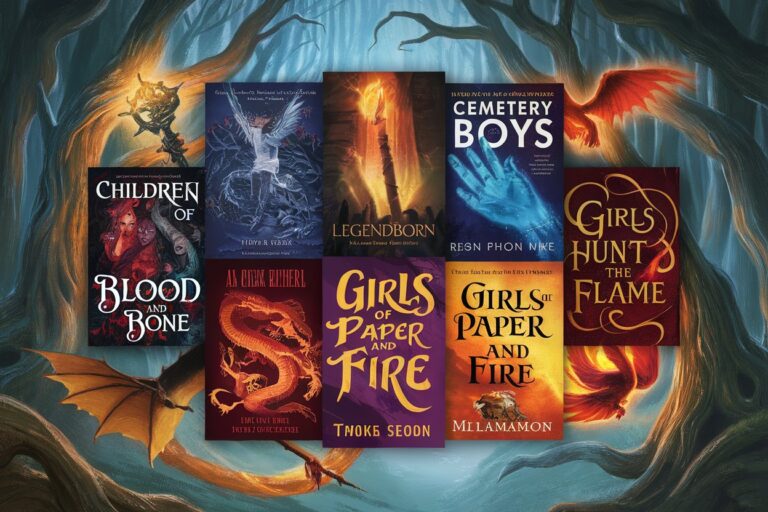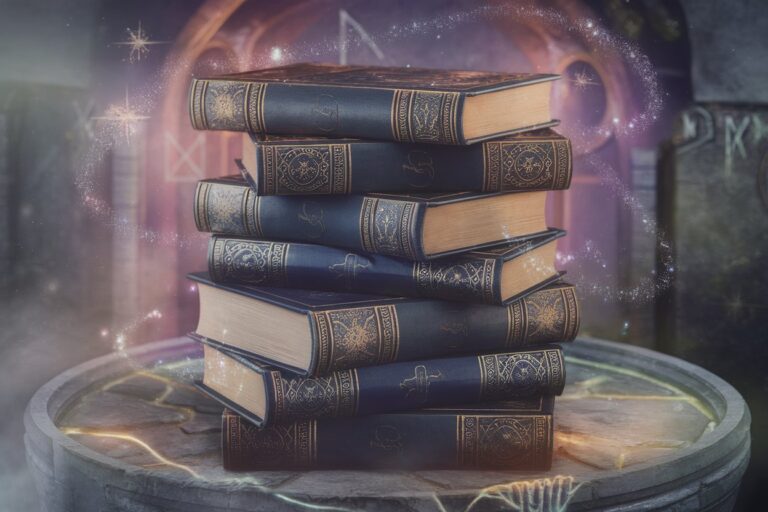Discover the best ya fantasy books of 2025, from magical academies to diverse adventures. Our comprehensive guide explores top series, standalone novels, and underrated gems.
Have you ever found yourself lost in a world of magic, adventure, and extraordinary characters? That’s the spellbinding power of young adult fantasy books. As someone who’s spent countless nights turning pages well past midnight, I can tell you there’s nothing quite like the rush of discovering a new fantasy realm where anything is possible.
In 2025, YA fantasy continues to evolve, bringing us fresh voices, diverse perspectives, and imaginative worlds that capture both teen and adult readers alike. Whether you’re looking for standalone masterpieces, ongoing series, or books featuring specific themes like magical academies or fae courts, this guide will help you find your next literary adventure.
Let’s dive into the magical universe of YA fantasy books, exploring everything from timeless classics to the hottest new releases that deserve a spot on your bookshelf.
Table of Contents
- What Are YA Fantasy Books?
- What Age Group Is YA Fantasy Intended For?
- How Does YA Fantasy Differ from Adult Fantasy?
- Top 15 Best Young Adult Fantasy Books of 2025
- 1. Throne of Glass by Sarah J. Maas
- 2. A Court of Thorns and Roses by Sarah J. Maas
- 3. Six of Crows by Leigh Bardugo
- 4. Shadow and Bone by Leigh Bardugo
- 5. The Cruel Prince by Holly Black
- 6. Serpent & Dove by Shelby Mahurin
- 7. Children of Blood and Bone by Tomi Adeyemi
- 8. Legendborn by Tracy Deonn
- 9. The Gilded Wolves by Roshani Chokshi
- 10. Caraval by Stephanie Garber
- 11. Cinder by Marissa Meyer
- 12. The Priory of the Orange Tree by Samantha Shannon
- 13. Sorcery of Thorns by Margaret Rogerson
- 14. Red Queen by Victoria Aveyard
- 15. Daughter of Smoke & Bone by Laini Taylor
- Common Themes in YA Fantasy Books
- Are There Any Standalone YA Fantasy Novels Worth Reading?
- How Do YA Fantasy Books Handle Romance and Relationships?
- What Makes a Great YA Fantasy Protagonist?
- Are There Any Diverse YA Fantasy Books?
- What Are the Best Magical Academy Settings in YA Fantasy Books?
- What Role Does World-Building Play in YA Fantasy Novels?
- How Can I Write My Own YA Fantasy Story?
- What Are Some Underrated YA Fantasy Books?
- Conclusion: The Enduring Magic of YA Fantasy
What Are YA Fantasy Books?
Young adult fantasy books blend the coming-of-age elements of YA fiction with the magical and otherworldly aspects of fantasy literature. These stories typically feature teenage protagonists navigating both the challenges of growing up and extraordinary circumstances involving magic, mythical creatures, or alternate worlds.
What makes YA fantasy special is how it addresses universal themes of identity, belonging, and self-discovery through fantastical lenses. The protagonists might be fighting dragons or challenging evil sorcerers, but they’re also dealing with friendship dynamics, first loves, and figuring out who they are—just like real teenagers.
“YA fantasy creates a unique space where readers can process complex emotions and situations through the safe distance of magical worlds,” says a popular YA author. “The stakes may involve saving kingdoms, but the heart of these stories remains deeply human.”

What Age Group Is YA Fantasy Intended For?
While the term “young adult” suggests these books are primarily for teenagers (typically ages 12-18), the reality is much broader. YA fantasy has a remarkably wide appeal that crosses age boundaries.
Most publishers target YA fantasy books at readers aged 12-18, with some variations:
- 12-14 years: These books often feature slightly younger protagonists and contain milder content
- 15-18 years: These stories may include more complex themes, relationships, and sometimes more mature content
However, a significant portion of YA fantasy readers—sometimes estimated at over 50%—are actually adults. I’m certainly proof of that! There’s something timelessly appealing about these stories of transformation, discovery, and adventure that resonates regardless of your age.
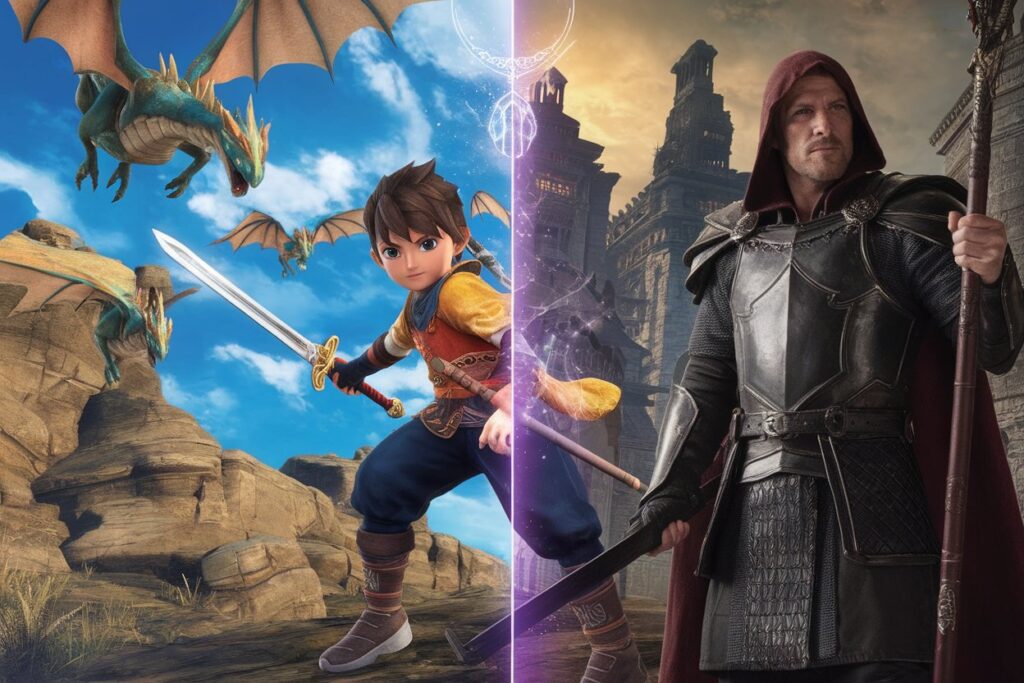
How Does YA Fantasy Differ from Adult Fantasy?
The boundaries between YA and adult fantasy can sometimes blur, but several key differences typically distinguish them:
| Aspect | YA Fantasy | Adult Fantasy |
|---|---|---|
| Protagonist Age | Usually 12-18 years old | Usually 18+ years old |
| Narrative Focus | Coming-of-age, identity, first experiences | Broader themes, political intrigue, established adult lives |
| Pacing | Generally faster-paced | Often slower, more detailed worldbuilding |
| Complexity | Accessible without sacrificing depth | It may contain more graphic violence, sexuality, language |
| Content | Less explicit content, though still addressing serious themes | May contain more graphic violence, sexuality, language |
| Length | Usually 300-400 pages | It may include more intricate systems and concepts |
These differences aren’t strict rules—many YA fantasies explore complex political systems, while some adult fantasies feature younger protagonists. The lines continue to blur as both categories evolve.
Top 15 Best Young Adult Fantasy Books of 2025
Looking for your next great read? Here are the standout YA fantasy titles making waves this year:
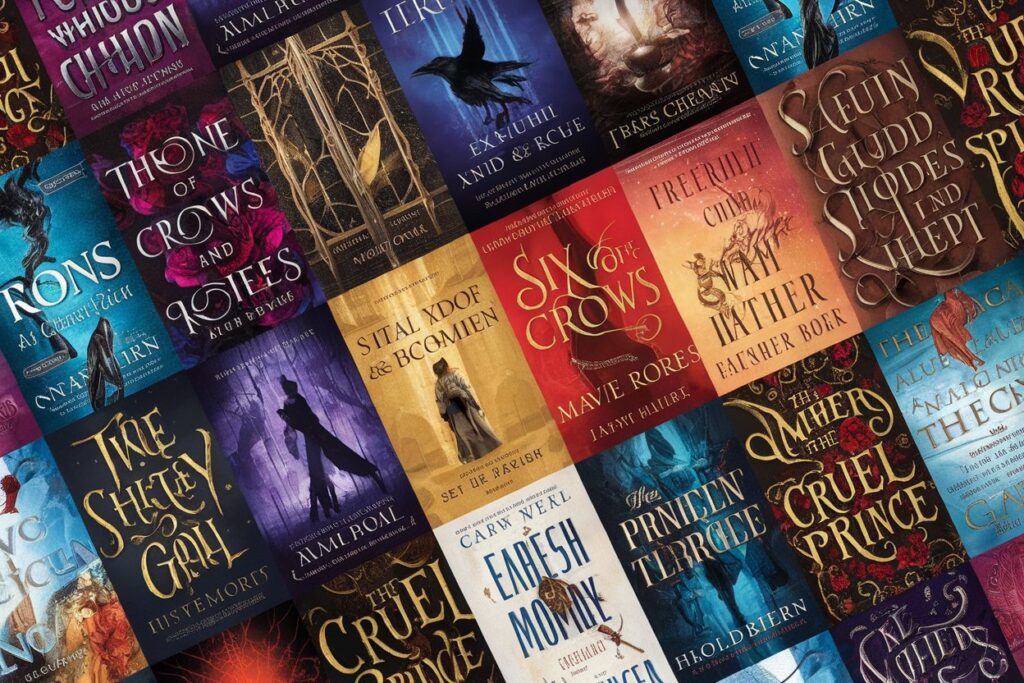
1. Throne of Glass by Sarah J. Maas
This series continues to captivate readers with its tale of Celaena Sardothien, an assassin fighting for her freedom while uncovering her magical heritage. The complex characters, political intrigue, and romantic subplots make this a must-read for fantasy lovers.
Why it stands out: Maas crafts a protagonist who evolves dramatically across the series, giving readers a satisfying character arc alongside breathtaking action sequences.
2. A Court of Thorns and Roses by Sarah J. Maas
This fae-inspired series blends romance, court politics, and high stakes with unforgettable characters. The relationship dynamics evolve in surprising ways, and the worldbuilding grows richer with each installment.
Why it stands out: The blend of romance and fantasy creates an addictive reading experience with emotional depth that keeps readers invested in the characters’ journeys.
3. Six of Crows by Leigh Bardugo
This heist story set in Bardugo’s Grishaverse features a diverse cast of morally complex characters, each with unique abilities and traumatic backgrounds. The intricate plot and gritty, magical world make this duology a standout in the genre.
Why it stands out: Bardugo’s multiple POV approach gives readers intimate access to each character’s motivations and secrets, creating a rich tapestry of interconnected stories.
4. Shadow and Bone by Leigh Bardugo
The original Grishaverse trilogy follows Alina Starkov as she discovers her power to summon light in a war-torn kingdom divided by a monstrous darkness called the Shadow Fold.
Why it stands out: The Russian-inspired fantasy setting offers a refreshing departure from the typical medieval European fantasies while exploring themes of power and corruption.
5. The Cruel Prince by Holly Black
This series follows Jude, a mortal girl navigating the dangerous politics of the Faerie court after being raised there alongside her sisters. The intricate political machinations and complex relationship dynamics keep readers guessing until the end.
Why it stands out: Black’s unflinching portrayal of the beautiful but cruel fae world creates a darkly intoxicating atmosphere that perfectly complements Jude’s journey.
6. Serpent & Dove by Shelby Mahurin
A witch and witch hunter forced into marriage creates the perfect enemies-to-lovers scenario against a French-inspired fantasy backdrop. The magical system based on sacrifice adds depth to this romantic fantasy.
Why it stands out: The cultural and religious conflicts in the story create meaningful stakes beyond the romantic relationship at its center.
7. Children of Blood and Bone by Tomi Adeyemi
This West African-inspired fantasy follows Zélie Adebola’s quest to restore magic to her people and overthrow an oppressive monarchy. The rich cultural elements and themes of prejudice make this a powerful read.
Why it stands out: Adeyemi’s incorporation of Yoruba mythology creates a vivid, unique fantasy world that stands apart in the genre.
8. Legendborn by Tracy Deonn
This modern retelling of Arthurian legends follows Bree Matthews as she discovers a secret society of demon hunters at her college. The exploration of grief alongside magical adventure creates a compelling narrative.
Why it stands out: Deonn’s integration of African American folk magic with traditional Arthurian legends creates a fresh, relevant take on classic mythology.
9. The Gilded Wolves by Roshani Chokshi
Set in 1889 Paris, this treasure-hunting adventure follows a diverse cast of characters with unique magical talents as they pursue ancient artifacts with world-changing potential.
Why it stands out: The historical setting, diverse cast, and heist elements combine to create a richly detailed fantasy adventure with high stakes.
10. Caraval by Stephanie Garber
This magical competition filled with mystery follows sisters Scarlett and Tella as they become entangled in the legendary game of Caraval, where nothing is quite what it seems.
Why it stands out: Garber’s lush, sensory prose creates an immersive experience that mirrors the disorienting nature of the magical game itself.
11. Cinder by Marissa Meyer
This sci-fi retelling of Cinderella features a cyborg mechanic who becomes entangled in an intergalactic struggle. The fusion of fairy tales with futuristic elements creates a unique reading experience.
Why it stands out: Meyer’s skill at reimagining classic fairy tales in a sci-fi context brings fresh energy to familiar stories.
12. The Priory of the Orange Tree by Samantha Shannon
This epic standalone novel features dragons, queens, and international politics in a world divided by religious differences. The multiple perspectives and expansive worldbuilding create an immersive experience.
Why it stands out: Shannon’s feminist take on high fantasy offers strong female characters in varied roles across a richly detailed world.
13. Sorcery of Thorns by Margaret Rogerson
Featuring magical libraries and enchanted grimoires, this standalone fantasy follows Elisabeth, a library apprentice who must team up with a sorcerer she’s been taught to fear.
Why it stands out: The concept of living, breathing books creates a uniquely bookish fantasy perfect for bibliophiles.
14. Red Queen by Victoria Aveyard
In a world divided by blood—silver for the elite with powers, red for the common people—a red-blooded girl discovers she has powers of her own. The ensuing power struggle makes for a thrilling read.
Why it stands out: Aveyard’s exploration of privilege and rebellion creates meaningful social commentary within an entertaining fantasy framework.
15. Daughter of Smoke & Bone by Laini Taylor
This unique fantasy follows Karou, a blue-haired art student who runs errands for a monstrous chimera. The mystery of her origin unfolds against a backdrop of an ancient war between chimera and seraphim.
Why it stands out: Taylor’s poetic prose and the Prague setting create an atmospheric fantasy unlike anything else in the genre.
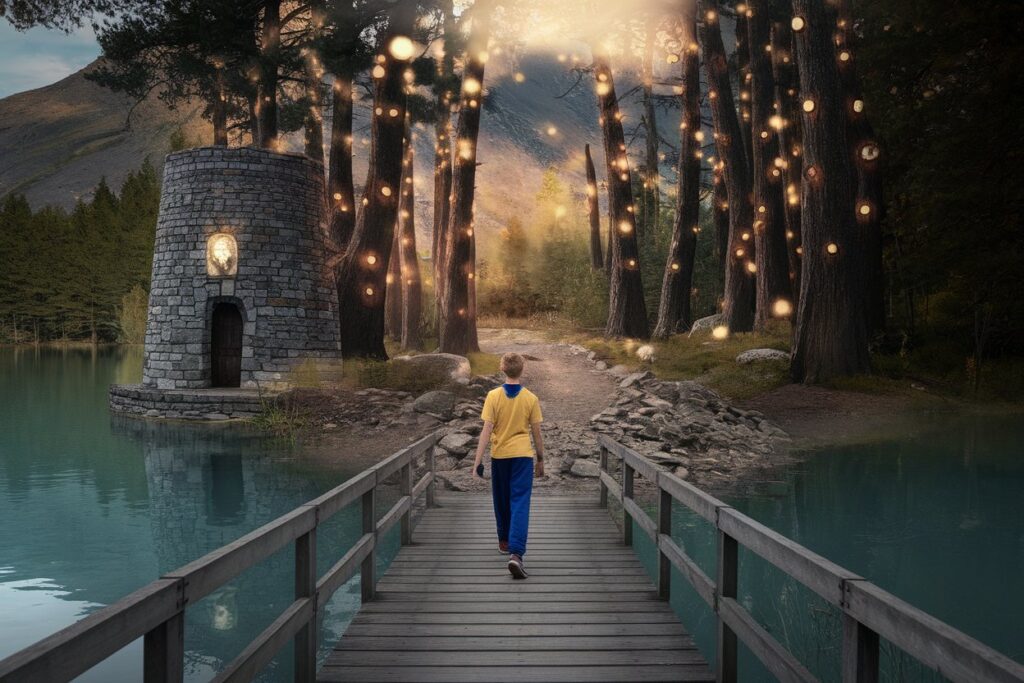
Common Themes in YA Fantasy Books
YA fantasy literature explores several recurring themes that resonate with readers of all ages:
Coming-of-Age Journeys
At its heart, YA fantasy is about growing up—with the added dimension of magical circumstances. Protagonists discover not only their magical abilities but also their values, strengths, and purpose. These journeys mirror the universal experience of maturing and finding one’s place in the world.
For example, in “Children of Blood and Bone,” Zélie’s quest to restore magic is also a journey to understand her heritage and embrace her power despite fear and doubt—something many teenagers can relate to, even without magical abilities.
Identity and Self-Discovery
YA fantasy protagonists often grapple with questions of identity: Who am I? Where do I belong? What makes me different? These questions gain additional layers when characters discover hidden powers, secret lineages, or prophecies about their destiny.
The exploration of identity through the lens of the extraordinary helps readers process their own questions of self in a safe, imaginative space.
Power and Responsibility
When young protagonists discover they have extraordinary abilities, they must learn to use their powers responsibly. This theme resonates with teenagers gaining new freedoms and responsibilities in their own lives.
Series like “The Hunger Games” examines how power can corrupt and how standing against tyranny requires personal sacrifice and moral courage.
Found Family and Belonging
Many YA fantasy protagonists begin their journeys feeling like outsiders, only to find a community where they truly belong. This “found family” theme speaks to the universal desire for acceptance and understanding.
In “Six of Crows,” a group of misfits and criminals becomes a tight-knit family, illustrating how deep bonds can form between people from vastly different backgrounds when they face challenges together.
Are There Any Standalone YA Fantasy Novels Worth Reading?
Absolutely! While series dominate the YA fantasy landscape, there are exceptional standalone novels that deliver complete, satisfying stories in a single volume:
The Priory of the Orange Tree by Samantha Shannon
This epic standalone delivers everything you might expect from a series—complex world-building, multiple perspectives, and satisfying character arcs—in one (admittedly hefty) volume.
Sorcery of Thorns by Margaret Rogerson
With its magical libraries, living books, and slow-burn romance, this self-contained story offers a complete fantasy adventure without requiring multiple book commitments.
The Night Circus by Erin Morgenstern
This atmospheric fantasy about a magical competition between two young illusionists creates an enchanting world that exists within our own. The rich sensory details make the Night Circus come alive in readers’ imaginations.
Raybearer by Jordan Ifueko
This West African-inspired fantasy follows Tarisai, who is sent to compete for a place on the Crown Prince’s Council of Eleven, only to discover she’s been magically compelled to kill him. The complete narrative arc makes for a satisfying standalone read.
Spin the Dawn by Elizabeth Lim
Often described as “Mulan meets Project Runway,” this Chinese-inspired fantasy follows a girl who disguises herself as a boy to compete for the position of an imperial tailor. The magical elements and romantic subplots enhance the competition storyline.
Standalone novels offer the perfect entry point for readers new to fantasy or those who don’t want to commit to a multi-book series. They also provide the satisfaction of a complete story arc in a single reading experience.
How Do YA Fantasy Books Handle Romance and Relationships?
Romance plays a significant role in many YA fantasy books, though its prominence varies widely across the genre. Here’s how love and relationships typically appear:
Varied Romantic Intensity
Some YA fantasies feature romance as a central plot element (like Sarah J. Maas’s “A Court of Thorns and Roses”), while others include romantic subplots that complement but don’t overshadow the main adventure (like Leigh Bardugo’s “Shadow and Bone”).
Still others, like “The Percy Jackson” series, focus primarily on friendships and personal growth, with romance taking a minor role, particularly in early installments.
Popular Romantic Tropes
YA fantasy embraces many beloved romantic tropes:
- Enemies-to-lovers (exemplified in “The Cruel Prince”)
- Forbidden love across warring factions (seen in “An Ember in the Ashes”)
- Love triangles (present in many series, including “The Hunger Games”)
- Slow-burn romance that develops over multiple books
These tropes provide emotional tension and character development alongside the magical adventures.
LGBTQ+ Representation
Modern YA fantasy increasingly includes diverse relationships and gender identities. Books like “Cemetery Boys” by Aiden Thomas, “Girls of Paper and Fire” by Natasha Ngan, and “The Priory of the Orange Tree” by Samantha Shannon feature LGBTQ+ main characters and romances.
This representation helps all readers see themselves in fantastical worlds and expands the emotional landscape of YA fantasy literature.
More Than Just Romance
It’s worth noting that YA fantasy explores many relationship types beyond romantic love. Found families, mentor relationships, friendships tested by adversity, and complex family dynamics all feature prominently in these stories.
For example, “Six of Crows” explores how a team of criminals becomes a family, while “Children of Blood and Bone” examines sibling relationships alongside its magical rebellion.
What Makes a Great YA Fantasy Protagonist?
The most memorable YA fantasy protagonists share certain qualities that make readers invest in their journeys:
Relatable Despite Extraordinary Circumstances
The best protagonists feel like real people despite their magical abilities or extraordinary circumstances. They experience universal emotions—doubt, fear, joy, love—that readers recognize from their own lives.
Katniss Everdeen from “The Hunger Games” resonates because her protective instinct toward her sister and her struggle with trauma feel authentic, even in a dystopian world.
Flawed but Growing
Great protagonists make mistakes, have blind spots, and occasionally fail. These flaws make them human, while their efforts to overcome their weaknesses create compelling character arcs.
Jude from “The Cruel Prince” begins as vulnerable but becomes increasingly calculating and ruthless to survive in the fae court—a transformation that feels earned through her experiences.
Agency and Initiative
The most compelling protagonists actively make choices rather than just reacting to events. Even when circumstances are beyond their control, they make decisions that drive the plot forward.
Zélie from “Children of Blood and Bone” chooses to pursue her dangerous mission to restore magic, rather than being merely swept along by prophecy or coincidence.
Complex Motivations
The best YA fantasy protagonists are driven by layered motivations that might include personal desires, broader ideals, and complicated relationships. This complexity makes their choices more interesting.
Kaz Brekker from “Six of Crows” is motivated by revenge, profit, and protecting his crew—motivations that sometimes conflict, creating inner tension that enriches the story.

Are There Any Diverse YA Fantasy Books?
Absolutely! The YA fantasy landscape has become increasingly diverse in recent years, offering stories from varied cultural perspectives and featuring protagonists with diverse identities:
Cultural Diversity in Fantasy Settings
Many contemporary YA fantasies draw inspiration from non-Western mythologies and cultural traditions:
- Children of Blood and Bone by Tomi Adeyemi incorporates Yoruba mythology and West African cultural elements
- The Gilded Wolves by Roshani Chokshi features a multicultural cast in a magical version of 19th-century Paris
- Raybearer by Jordan Ifueko creates an Afrofantasy world with rich cultural details
- Spin the Dawn by Elizabeth Lim draws on Chinese folklore and cultural elements
- Woven in Moonlight by Isabel Ibañez incorporates Bolivian culture and history
Diverse Protagonists and Representation
Modern YA fantasy increasingly features protagonists from various backgrounds:
- Legend Born by Tracy Deonn features a Black protagonist reclaiming her magical heritage
- Cemetery Boys by Aiden Thomas centers on a trans-Latinx protagonist
- Girls of Paper and Fire by Natasha Ngan features Asian-inspired fantasy with LGBTQ+ main characters
- The Priory of the Orange Tree by Samantha Shannon includes diverse characters across sexuality, race, and culture
- We Hunt the Flame by Hafsah Faizal draws on Arabian myths and features Arab protagonists
These books offer windows into diverse experiences and mirrors for readers who may not have seen themselves represented in fantasy literature before.
Why Diverse Fantasy Matters
Diverse fantasy books expand our imagination of what’s possible. When magical worlds draw from various cultural traditions, they bring fresh mythologies, magical systems, and worldviews to the genre.
For young readers especially, seeing characters who share their identities embarking on heroic journeys can be profoundly affirming. As one teen reader put it, “Finding a fantasy hero who looks like me made me feel like I could be the hero of my own story too.”
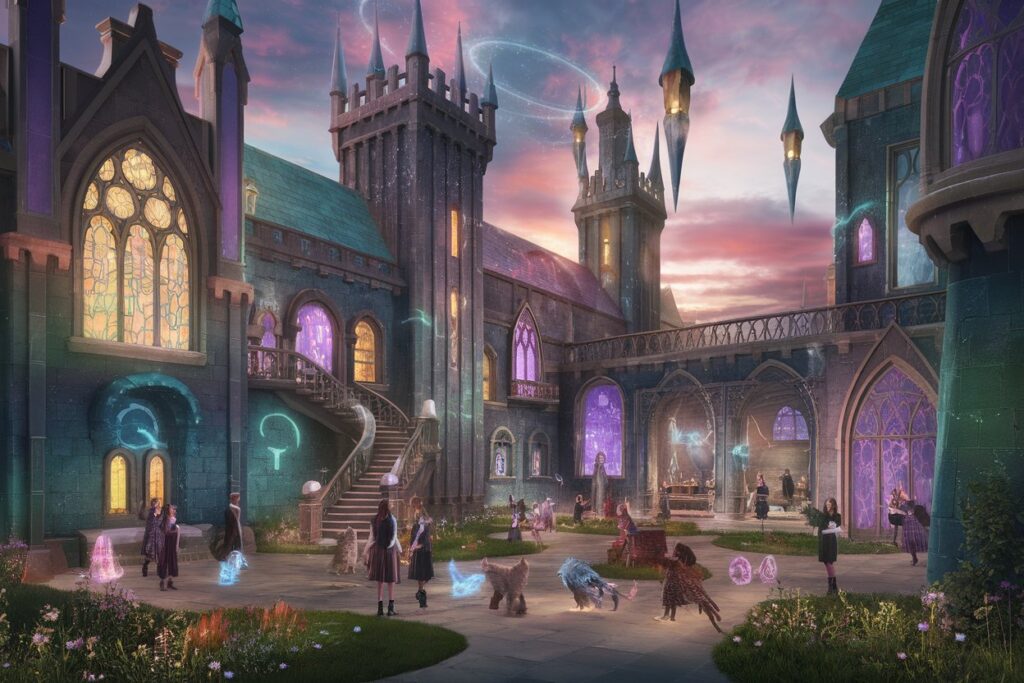
What Are the Best Magical Academy Settings in YA Fantasy Books?
Magical school settings have captivated readers since long before Hogwarts, offering the perfect blend of familiar educational experiences and fantastical learning environments:
Scholomance from “A Deadly Education” by Naomi Novik
This dark magical school has no teachers and actively tries to kill its students, with only the strongest graduating. The twisted take on magical education creates a uniquely tense environment where alliances are necessary for survival.
Blackcliff Academy from “An Ember in the Ashes” by Sabaa Tahir
This brutal military academy trains Masks, the elite soldiers of the Empire. The rigorous training and deadly consequences for failure create a high-stakes environment where loyalty is tested.
School for Good and Evil from the series by Soman Chainani
This innovative academy trains both heroes and villains, questioning the binary nature of good and evil through its curriculum and student experiences.
Ellingham Academy from “Truly Devious” by Maureen Johnson
This elite school for exceptional students combines mystery, history, and subtle magical elements. The emphasis on different talents creates a diverse cast of characters with unique abilities.
The White Tower from “The Black Witch” by Laurie Forest
This magical university brings together students from different races with a history of conflict, creating tension and opportunities for growth as prejudices are challenged.
What makes magical academies so appealing is how they combine the universal experience of school—with its friendships, rivalries, and self-discovery—with magical learning that expands the possibilities for adventure and character development.
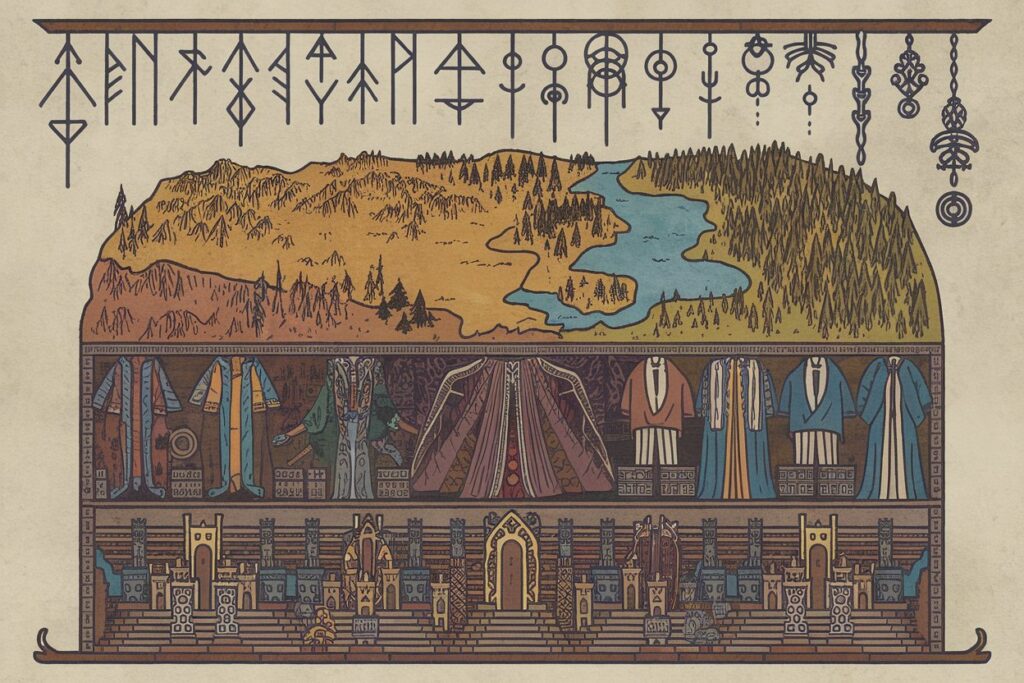
What Role Does World-Building Play in YA Fantasy Novels?
World-building is the foundation upon which all fantasy stories rest. It encompasses everything from magic systems and mythologies to geography, politics, and cultural details:
Creating Believable Magic Systems
The most compelling YA fantasies establish clear rules for how magic works in their worlds. Whether magic comes at a cost (as in “Children of Blood and Bone”), follows strict elemental principles (as in “Shadow and Bone”), or operates through specific magical items (as in “The Gilded Wolves”), consistent magical systems help readers understand the possibilities and limitations within the story.
Developing Cultural and Political Landscapes
Rich fantasy worlds include varied cultures, political systems, and histories that influence characters’ perspectives and choices. “The Priory of the Orange Tree” creates multiple nations with distinct religious beliefs and attitudes toward dragons, making international politics feel authentic despite the fantastical elements.
Balancing Detail and Story
YA fantasy typically strikes a balance between world-building and pacing, offering enough detail to make the world feel real without bogging down the narrative. This is where YA often differs from adult fantasy, which may include more extensive world-building passages.
As one YA author explains, “I create an iceberg world—the reader only sees the tip, but I know everything below the surface. This knowledge informs the story even when it’s not explicitly stated.”
World-Building as Metaphor
The most effective world-building in YA fantasy often serves thematic purposes. The division between Silver and Red blood in “Red Queen” creates a literal manifestation of privilege and discrimination. The Shadow Fold in “Shadow and Bone” physically divides a nation, representing larger divides in ideology and loyalty.
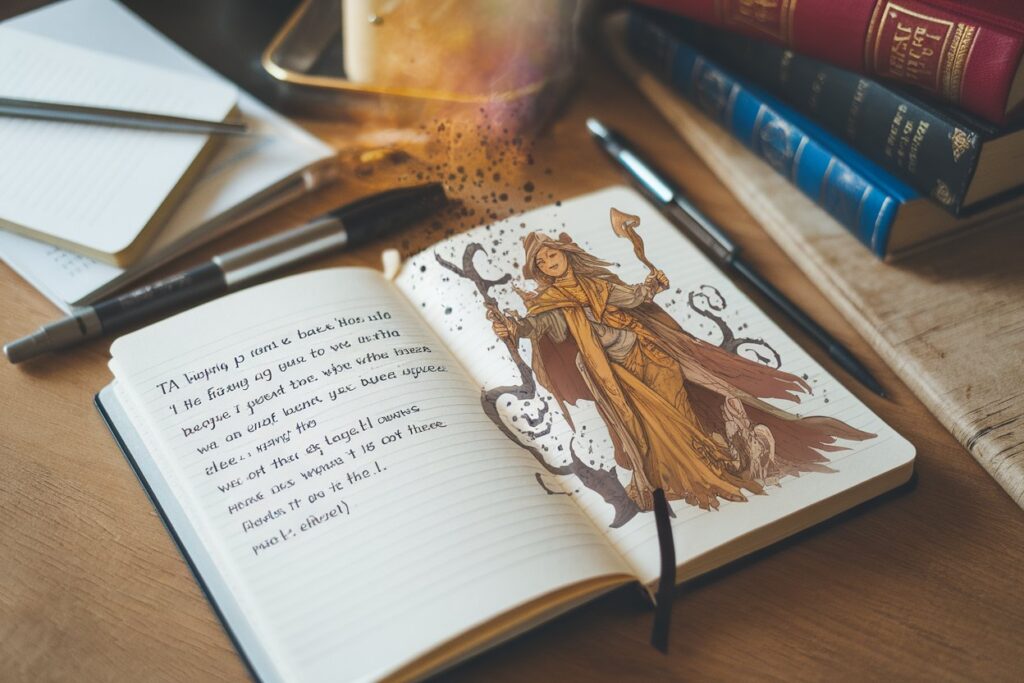
How Can I Write My Own YA Fantasy Story?
If you’re inspired to create your own YA fantasy world, here are some tips to get started:
Know Your Readers (But Write for Yourself First)
Understand the YA audience’s interests and expectations, but don’t pander. The most successful YA fantasy authors write stories they themselves would want to read, bringing authenticity to their work.
Create Relatable Characters with Extraordinary Challenges
Develop protagonists who feel like real teenagers—with insecurities, strengths, and room to grow—and then place them in extraordinary circumstances that test their limits.
Establish Clear Rules for Your World
Whether your story involves elemental magic, mythical creatures, or parallel dimensions, establish consistent rules that govern how your world works. Readers will accept fantastical elements if they follow internal logic.
Balance Familiar Tropes with Fresh Perspectives
Beloved tropes like chosen ones, magical schools, or forbidden romance can provide familiar frameworks, but look for ways to subvert expectations or approach these elements from new angles.
Focus on the Coming-of-Age Journey
Remember that YA fantasy, at its heart, explores the transition from childhood to adulthood. Your fantastical elements should complement and enhance this core journey of self-discovery.
Read Widely in the Genre
Immerse yourself in both classic and contemporary YA fantasy to understand the genre’s evolution and current trends. This reading will help you find your unique voice within the larger conversation.

What Are Some Underrated YA Fantasy Books?
While bestsellers deservedly get attention, many brilliant YA fantasy books fly under the radar. Here are some hidden gems worth discovering:
“The Bone Houses” by Emily Lloyd-Jones
This Welsh-inspired fantasy blends historical fiction with folklore about the Walking Dead. The grave digger’s daughter and mapmaker journey through a forest where the dead don’t stay buried, creating a uniquely atmospheric adventure.
“Witchmark” by C.L. Polk
This Edwardian-inspired fantasy combines murder mystery, forbidden magic, and LGBTQ+ romance. The unique setting and carefully crafted magical system make this standalone novel stand out.
“Tess of the Road” by Rachel Hartman
Set in the same world as Hartman’s “Seraphina” but focusing on a different protagonist, this thoughtful fantasy addresses trauma recovery through a journey of self-discovery. The dragon lore adds depth to an already compelling character study.
“The Girl from Everywhere” by Heidi Heilig
This innovative fantasy features a ship that can sail to any place and time as long as the navigator has a map. The Hawaiian setting and time-travel elements create unique opportunities for adventure.
“The Astonishing Color of After” by Emily X.R. Pan
This magical realism narrative follows a girl who believes her mother has turned into a bird after her suicide. The exploration of grief through magical elements creates a powerful emotional journey.
These underrated gems offer fresh perspectives on fantasy tropes, innovative magical systems, and emotional depth that rewards adventurous readers willing to look beyond bestseller lists.
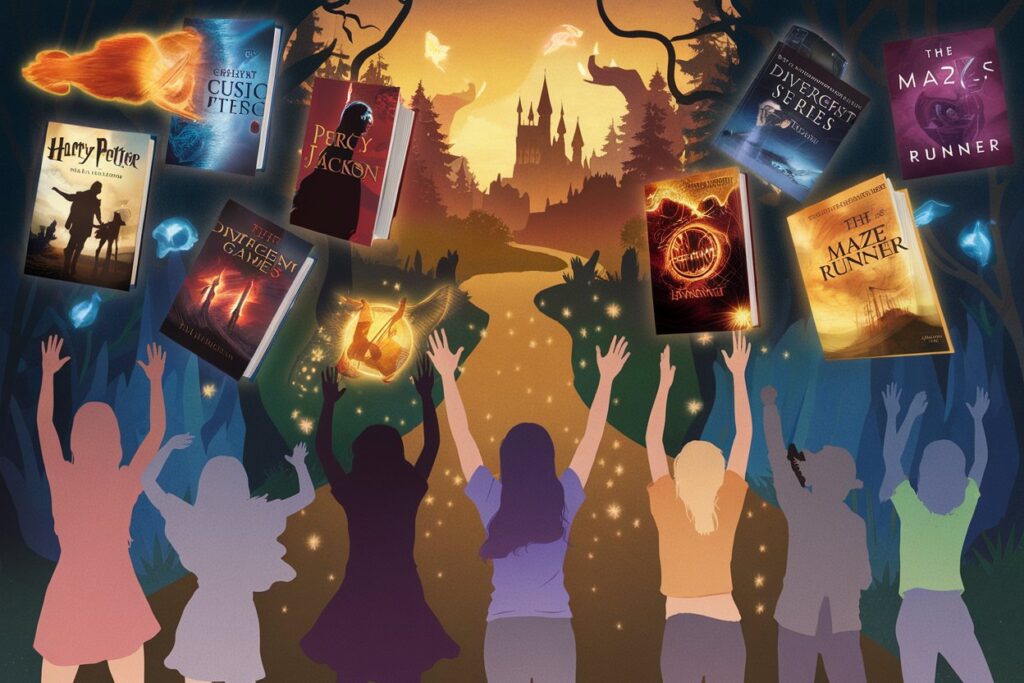
Conclusion: The Enduring Magic of YA Fantasy
Young adult fantasy continues to captivate readers of all ages because it combines the universal experiences of growing up with limitless magical possibilities. These stories remind us that ordinary people can face extraordinary challenges, that finding your place in the world is a magical journey in itself, and that friendship, courage, and love are powerful forces in any world.
Whether you’re drawn to epic battles between good and evil, intricate magical politics, or personal journeys of self-discovery, there’s a YA fantasy book waiting to transport you to its world. The genre continues to evolve, embracing diverse voices and perspectives while honoring the timeless elements that make fantasy so beloved.
As you explore the recommendations in this guide, remember that the most magical thing about books is their ability to connect us—to other worlds, to new ideas, and to each other. Happy reading!
What’s your favorite YA fantasy book or series? Share in the comments below!
